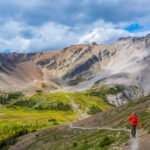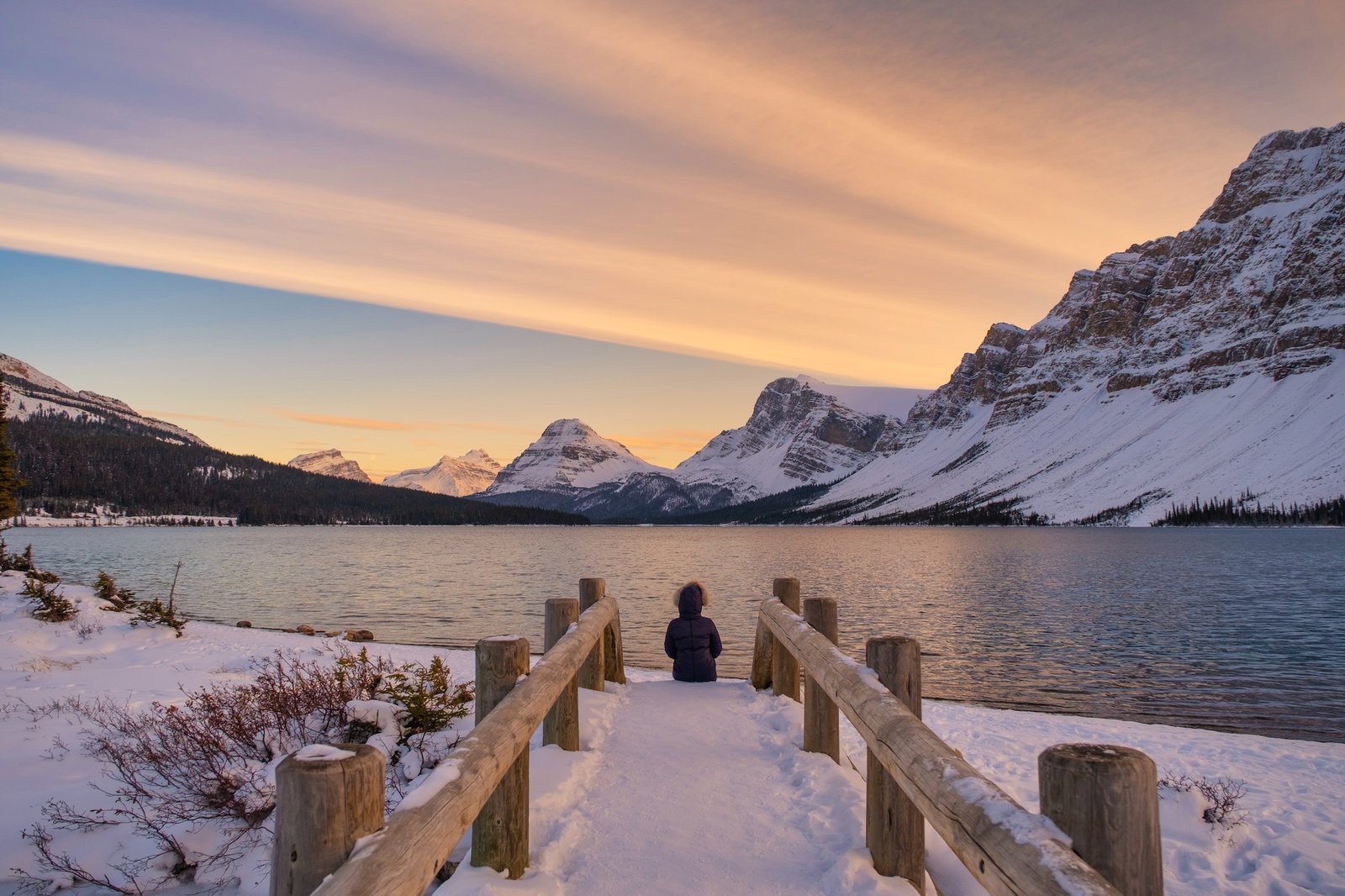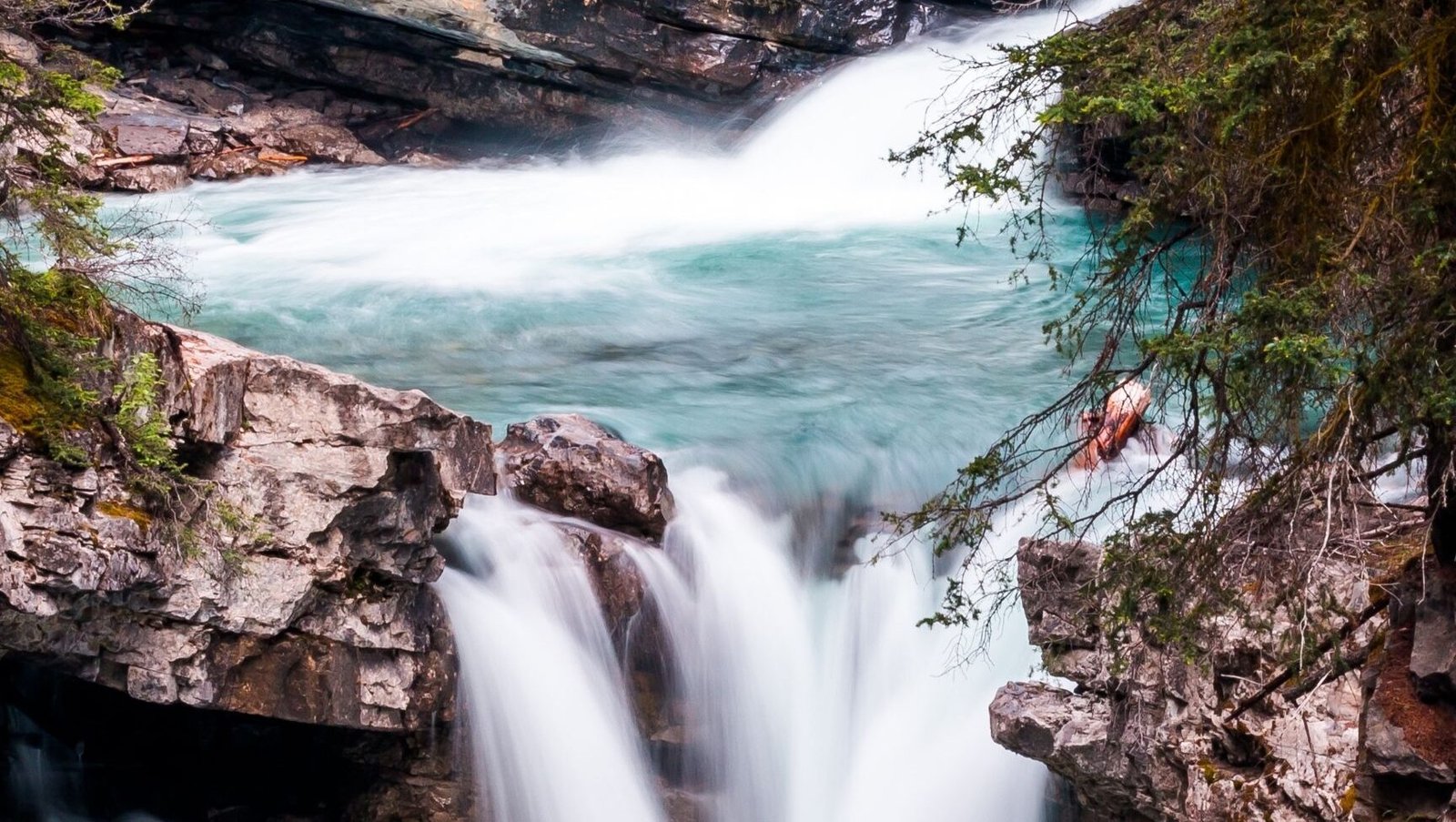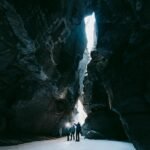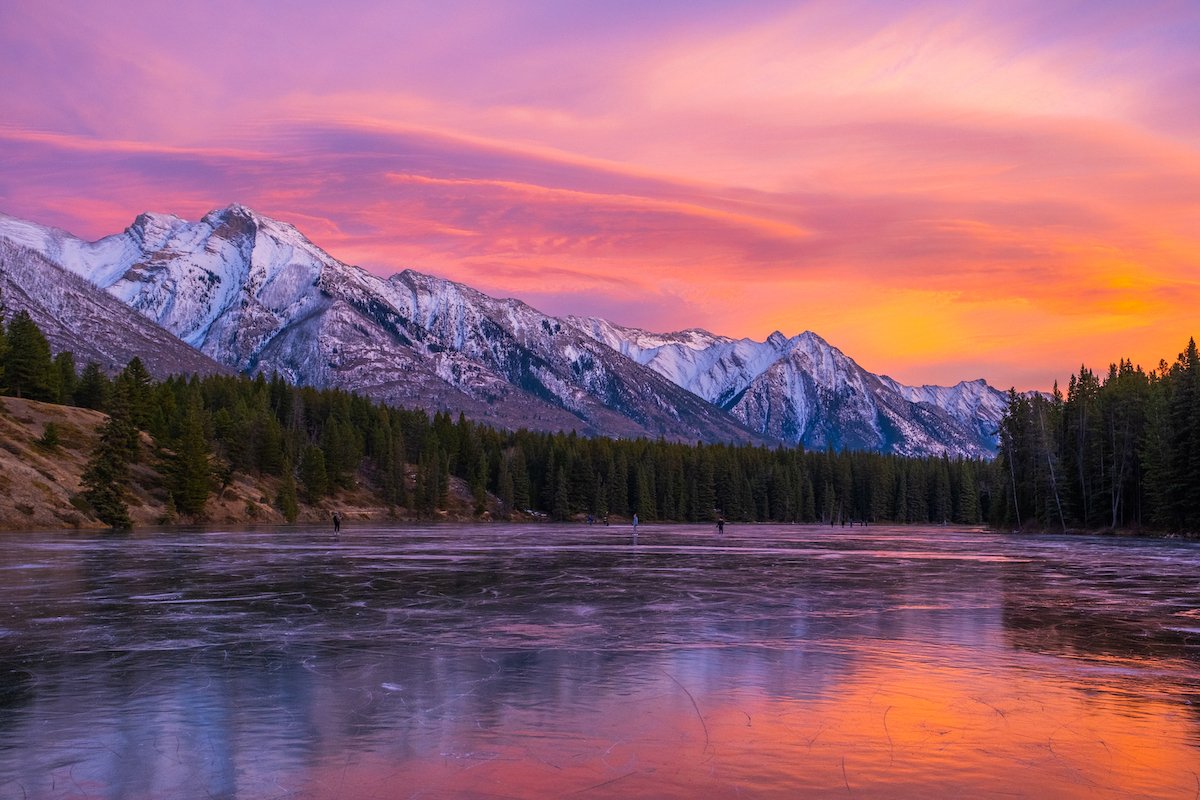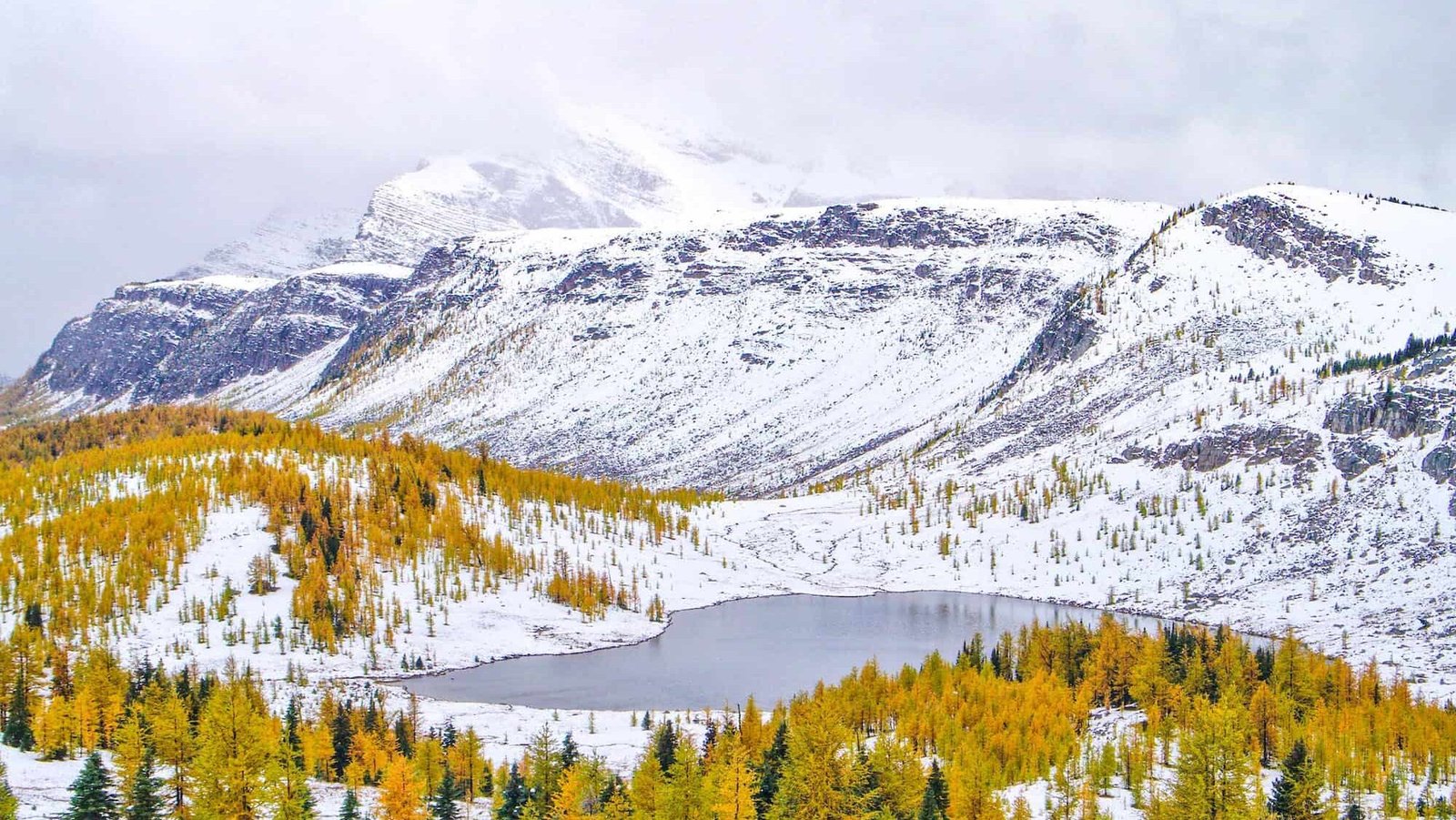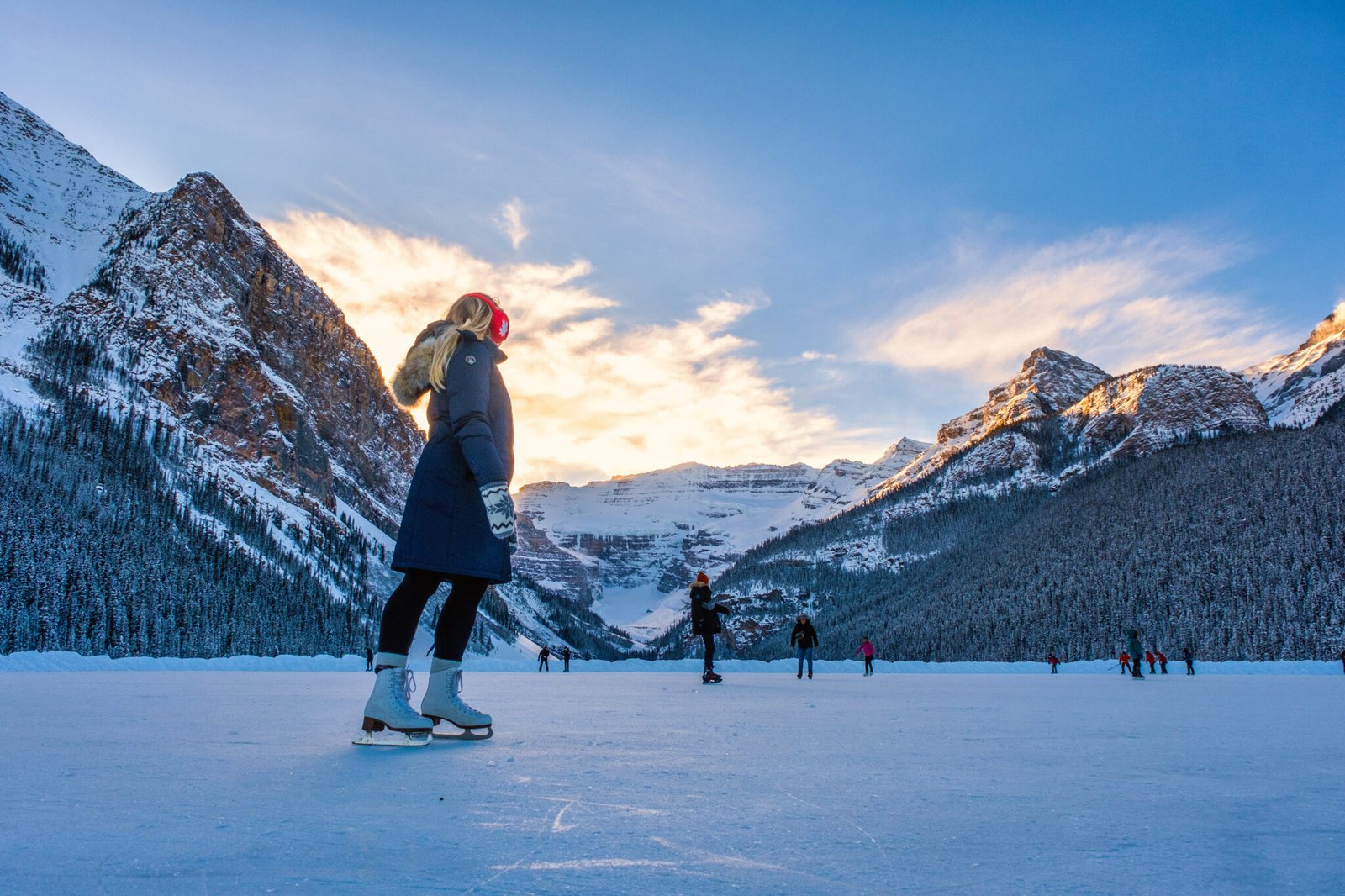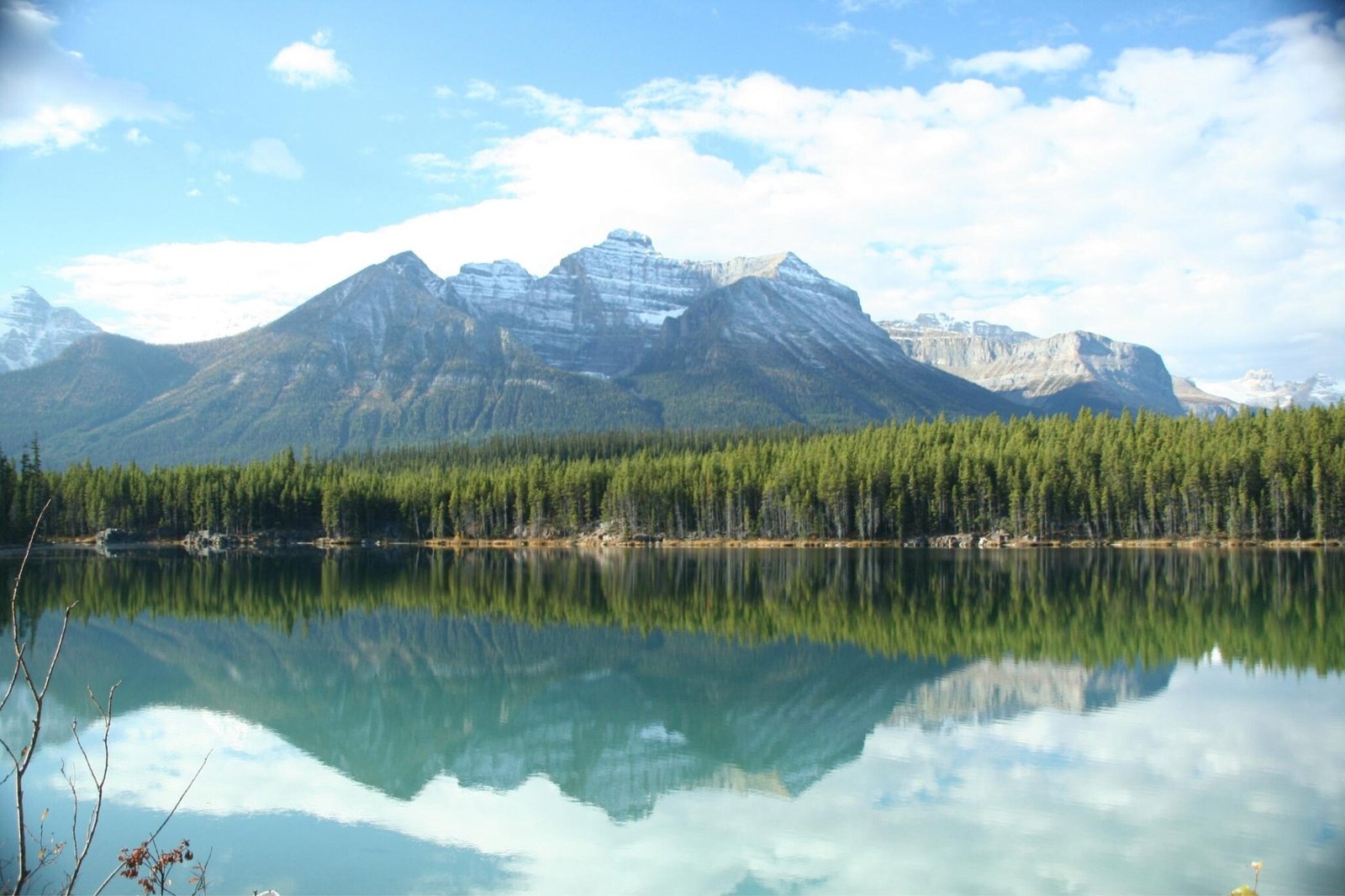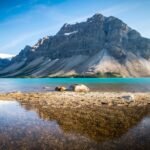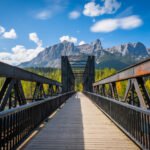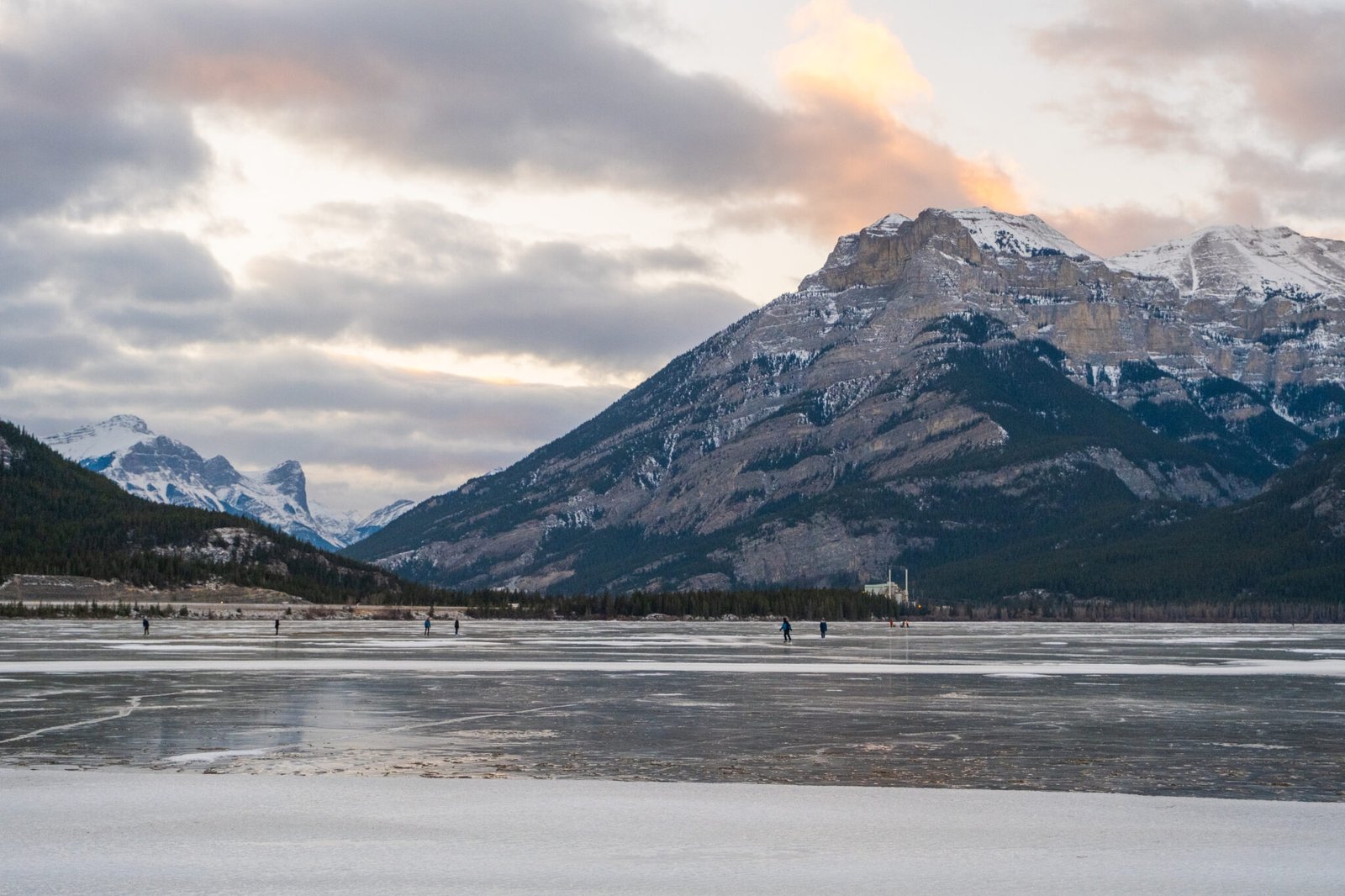Yes, the northern lights can be seen in Banff. Throughout the year, the Aurora Borealis appears several times. The best time to see the lights is during the winter months of October to May. However, due to low light pollution and fresh mountain air, they can be seen during the summer months.
Seeing the Aurora Borealis is always an amazing experience, but it’s even more so over the craggy peaks of the Canadian Rockies. We’ve seen the northern lights in a number of exotic locations, including Iceland, Norway, and Yukon. When we first learned that you could see the Aurora Borealis in the Canadian Rockies, we were surprised.
Here are the best places to see the northern lights in Banff. You, too, can spot them with a little patience and an eye on the aurora forecast!
The Best Way to See the Northern Lights in Banff
The Canadian Rockies’ Dark Skies

With Wood Buffalo and Jasper National Parks, Alberta is home to some of the world’s largest dark sky preserves. This means that there are strict laws and regulations in place to reduce any form of light pollution. Even if you don’t see the northern lights, you’ll have an amazing night sky viewing experience.
We’re spoiled by the night skies as locals, and it’s easy to forget that most people don’t have access to a sky littered with more stars than we could ever hope to count. It doesn’t matter if the northern lights appear; observing the night sky on a clear night is still amazing.
When Are the Northern Lights Visible in Banff?
It is impossible to predict when and where the aurora borealis will appear. The aurora borealis can appear at any time of year, but it is most visible between October and mid-April, when the night sky is at its darkest. The northern lights in Banff are most visible during the winter months of December to February.
The best times to see them are on clear nights with a new moon. Remember that the northern lights are geomagnetic activity with their own set of circumstances; just because it’s a clear night doesn’t mean they’re visible or active.
Don’t rule out the summer months because they can be seen at any time of year, but it’s unlikely and I wouldn’t plan a trip around it.
A word of caution: if they do appear during the summer, it will most likely be between 2:00 and 3:00 a.m., due to the shortness of the nights. It may be beneficial to learn more about the best time to visit Banff.
Take a look at the Aurora Forecast.

I would not recommend that out-of-province visitors plan their trip around seeing the northern lights in Banff. The lights in the Canadian Rockies are far too unpredictable, and the forecast is only a few days, if not a few hours, in advance.
However, setting an aurora alert and keeping an eye on the weather may be worthwhile for Albertans. Visitors and locals should keep an eye on the weather forecast if they want to see the Northern Lights. Fortunately, several institutes issued a forecast for the northern lights.
Aurora Watch, managed by the University of Alberta, sends out email alerts. Their updates are for the Edmonton area, but if they’re visible over Edmonton, they’ll almost certainly appear in Jasper, Banff, and possibly even Calgary!
The University of Alaska at Fairbanks also runs the Geophysical Institute and provides an aurora forecast for North America.
Weather & Lunar Cycle
It should go without saying, but the weather has a significant impact on your ability to see the lights. The amount of cloud cover can have a significant impact on your ability to see the lights. A little flexibility and a long night can help your chances, as can a drive up or down the Icefields Parkway.
The lunar cycle is an important factor to consider in addition to clouds. The moon is the brightest object in the night sky, making it difficult to see the stars and northern lights in Banff. When the moon sets or rises late, you have the best chances.
Of course, a new moon is ideal, but getting one to coincide with a cloudless night with the Northern Lights is pure luck. Before venturing out, keep an eye on the weather and the lunar cycle.
Where in Banff Can You See the Northern Lights?
If you want to see the lights, you must avoid any form of light pollution. On particularly active nights, a faint glow can be seen above the town. We have several suggestions for good places to see the lights.
Lake Minnewanka

Because it is only a short drive from town, Lake Minnewanka is the best place to see the lights. The dam walls provide an expansive night sky and are about a ten-minute drive from the town center.
Vermilion Lakes

While still relatively close to town, the third Vermilion Lake provides some of the best views with the least amount of light pollution.
Castle Junction

This intersection on the Bow Valley Parkway, halfway between Banff and Lake Louise, provides some lovely vantage points along the Bow River with Castle Mountain in the foreground. Additionally, Castle Junction is conveniently accessible via the Trans Canada.
Peyto Lake

A great spot to observe the night sky is the Peyto Lake overlook. Not to mention that it’s one of our favorite easily accessible photo locations.
Along Icefields Parkway

There are many great spots for photography along the Icefields Parkway, which is free of light pollution of any kind. It’s far from town and the lights frequently appear late at night, so be ready for a long night. Waterfowl Lakes and Bow Lake are two of the parkway’s best viewing locations.
Jasper

Because Jasper is a dark sky preserve, it is, of course, a great place to take nighttime photos.
How to Capture Banff’s Northern Lights on Camera
It makes sense that you would want to take a few pictures if you can see the lights. Both a tripod and a camera with manual controls are necessary if you intend to take nighttime photos of the northern lights.
A normal shot of the northern lights takes about 30 seconds and necessitates a stationary camera. To master the fundamentals of night photography, go alone to a peaceful, light-free location before your trip. It’s best to experiment and become well-versed in the various ISO settings, shutter speed, and aperture.
Some Advice for Seeing the Northern Lights in Banff
Learn the KP Index
Kp stands for the planetary index, a numerical scale with nine possible values. As the scale indicates how far south the lights will be visible, a 9 on a clear night will be a full-blown show, though even a 3–4 will be visible.
Dress Warm
Even in mid-August, you’ll need to pack appropriately for the chilly nights in the Rockies. Since you’ll be sitting still and gazing up at the sky all winter, we suggest bringing a little bit more clothing than just a ski jacket. Ski jackets work best when you’re on the go.
We recommend wearing thermal underwear, wool socks, a sweater, a down jacket or parka, windproof pants (ski pants), a scarf, and a toque as an excellent cold-weather ensemble.
A Thermos Is Key
Taking a hot beverage with you while gazing up at the cold sky will never be a cause for complaint. Although hot chocolate is a classic, I also love to bring some decaf tea in a thermos! Stanley is the brand we prefer to use to keep our drinks warm.
Plan to Lose Some Sleep
The northern lights don’t follow a predictable pattern where you can see them at nine o’clock every night. On certain evenings, their appearance may occur shortly after dusk, but on other nights, it may happen in the early morning hours.
You won’t have to stay up all night, but if you’re determined to see the northern lights in Banff, be ready to either wake up in the middle of the night or stay up until two or three in the morning.

